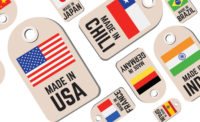Is Organic Certification Worth It?




If your product qualifies for organic certification, should you do it? It’s ironic that you can use ingredients treated with many different chemical pesticides and not have to state anything about the use of chemicals on your package, but if you use organic ingredients and want to promote the word “organic” on your food package you have to pay a yearly fee for organic certification. The question is a dilemma for many emerging food brands because it can be cost-prohibitive. But the answer is definitely, “Yes!” Here are the reasons why.
The different levels of organic
First, let’s overview the different levels of USDA organic certification:
- Certified products with 100% organic ingredients can say 100% Organic and display the USDA Organic seal.
- Certified products with 95% organic ingredients can say Organic and display the USDA Organic seal.
- Certified products with a minimum of 70% organic ingredients can say “Made with Organic Ingredients” but may not display the USDA Organic seal.
- Products made with less than 70% organic ingredients, or products that are not certified, can only list individual ingredients that are organic in the product’s ingredient statement. The required ingredient list is the only place the word “organic” can appear on the entire package for these products.
If you have organic certification
Use the word organic freely! Put it in the title, front copy, back copy, callouts and, of course, ingredients. I see many packages that put the USDA Organic seal on the front but don’t say much, if anything, else about the product being organic. Organic should always be in the product title when applicable. People see the product title first, and if the word organic isn’t there they may not realize it’s organic. It’s often important in packaging to overstate the obvious and not assume people will pore over the entire package or intuit key points. If using the USDA Organic seal, use it prominently on the front of the package.
If you can’t certify yet
For some brands, organic certification will still be cost-prohibitive at the brand or product launch. For these packages, you can only use the word in the product’s required ingredient listing. However there are still some tactics you can employ to emphasize the organic aspect of the product:
- Preface each organic ingredient with the word organic. Some packages use an asterisk after each ingredient that is organic and then add the footnote “*Organic” at the end of the list. This can be done when conserving space is essential, but it’s better to repeat the word as much as possible in the ingredient list so it really catches the eye. Repeated usage of the word organic conveys the message better than one listing.
- Make the ingredient list big and bold. There is an FDA-required minimum type size (1/16” tall based on the lowercase letter “O”) for the ingredient listing, but there is no maximum limit. Therefore, if you have the space, make that ingredient list large! And bold! It also helps to put it in “Title Case” as opposed to ALLCAPS, because the latter is harder to read in a paragraph form.
If organic certification isn’t an option now for your organic product, definitely plan for it in the future as soon as possible. Organic certification is an investment that pays for itself when you consider the whole picture.
The organic movement is growing
Unlike passing food trends, the desire for organic foods has been and continues to be part of a growing lifestyle that is continually becoming more mainstream. These consumers want healthy, whole, organic, natural, clean and quality ingredients and products, as well as food producers who are transparent about the processes they use. These consumers care about what they put into their bodies, eating for optimal health and nutrition. They know that we truly are what we put into our bodies, and that food is the foundation of health. Seeing “Organic” on a food package is a huge draw for this audience.
Organic is a key selling point
If a product is not certified organic (and therefore can’t use the word anywhere except the ingredient listing), many consumers won’t realize the product has an organic association. I estimate about 25 percent of consumers read the ingredients of a product and understand that it is made with organic ingredients. When you look at it that way, at least 75 percent of your audience will be missing out on a key differentiator for the product. That’s a big loss.
Organic justifies a higher price point
Consumers are willing to pay more for quality ingredients and products such as organic. Studies show that this buying trait is becoming more and more commonplace, and it spans all consumer groups from millennials to baby boomers. Another example is that commercial food corporations are buying up smaller, trusted natural and organic food brands because there is a large demand for them, meaning large profit.
Organic shows you care
Consumers know that organic brands are aligned with a healthy lifestyle and support the environment. Additionally, if a product is organic they know that usually also means “bad” ingredients are not used, and they can confirm this with a quick scan of the ingredient list. Buying a food product is about more than just the product itself—it’s about buying into a brand. When consumers identify a brand they can trust, they are more likely to repeat-buy and purchase other products from that brand.
Organic conveys natural
With so many brands removing natural and all-natural claims from their packaging due to class-action lawsuits, organic is a safer way to convey that the product is natural and better for you.
This article/blog is provided for information purposes only and does not constitute professional advice nor does it substitute for your reading and reviewing the applicable language from the FDA or USDA Organic regulations or obtaining advice from the appropriate professional regarding what is and is not required by the FDA or USDA Organic. This article/blog is not intended to provide advice and direction on how to comply with the FDA or USDA Organic requirements. The reader of this article/blog is urged to read the FDA or USDA Organic regulations and/or obtain the appropriate professional advice on the FDA or USDA Organic regulations. No professional, business or other advisory or economic relationship is created herein, and is some states these materials may be considered advertising.
Looking for a reprint of this article?
From high-res PDFs to custom plaques, order your copy today!









